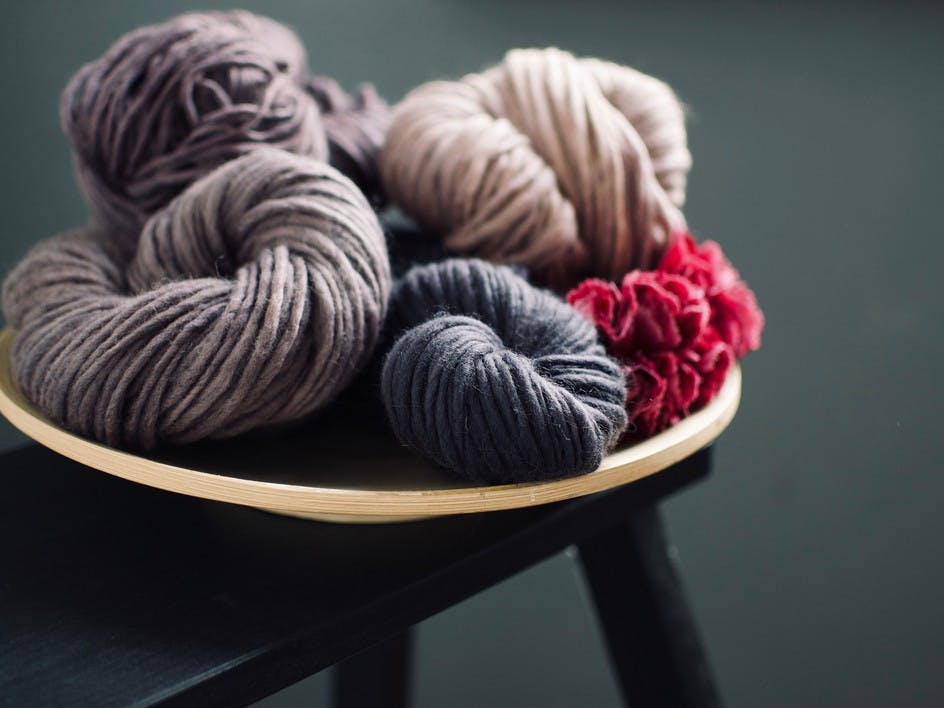Wool allergies: their causes and effects
Published on 11 January 2019 By Serena 4 min read
Itchy skin? Sore eyes? Trouble breathing? You may be allergic to wool. Here we talk you through wool allergies, their causes, effects and alternative fibres.
Many knitters rave about sheep’s wool, and it’s easy to see why! Versatile and warm, wonderfully springy, fire-retardant, often water-repellent, static-resistant and not to mention ecologically friendly. However, for some the prospect of pulling on a woolly jumper fills them with dread. A significant minority of us break out in a terrible rash after wearing wool followed by red itchy eyes, a runny nose or shallow breathing.
If you’ve had some or many of these symptoms through your time learning to knit, it might be worth considering whether you may have a wool allergy.
Are you allergic to wool?
Many people experience allergic reactions when wearing sheep's wool, that are not necessarily an allergy to the wool itself, but lanolin, dust mites, dyes or even cleaning chemicals that may have been used in the manufacturing of the yarn. Establishing the cause of the reaction is the essential first step when figuring out what you need to avoid and how you can enjoy your craft without suffering with an allergic reaction.

What is lanolin?
An allergy to sheep’s wool is actually caused by lanolin, the oil in a sheep’s fleece also known as ‘wool grease’ or ‘wool wax’ secreted by the glands of wool bearing animals. Symptoms of exposure are a red skin rash, which may be accompanied by a runny nose, sneezing, breathing problems and conjunctivitis (red eyes). Having these symptoms while wearing sheep's wool does not necessarily mean lanolin is what you are reacting to.
As lanolin is often found in beauty products, you may find you are allergic to lanolin if you notice you experience the same reaction when exposed to particular cosmetic creams, waxes and other products containing this ingredient. Sufferers have reported problems with sheep-derived vitamin D and air fresheners containing lanolin compounds. If you are concerned, a doctor can perform a simple skin patch test to establish if this is the cause of your reaction.
Lanolin allergies are extremely rare, however if you do find you have an intolerance you should avoid yarns that contain sheep wool, and instead opt for alpaca, cashmere or llama yarns, as these do not contain wool wax.
If a reaction persists, a natural plant based fibre, such as cotton or bamboo may be your best option.

Other allergies
If you experience a runny nose, any breathing problems or red eyes – any symptoms that are not on your skin – while wearing sheep's wool, you are most probably allergic to something. It may not be the sheep wool itself though: many people are allergic to dust mites in the wool or dyes and cleaning chemicals used in manufacture. A sufferer will need to avoid anything containing the allergen, and it can be pretty hard to find the culprit – and determine what contains it.
Sensitive skin
This is by far the most common cause of a skin reaction to wool. Sensitive skin can be so irritated by sheep wool that a rash develops which looks very like an allergic reaction. If you only suffer skin symptoms while wearing wool, and do not have a reaction to lanolin alone, it’s very likely that your delicate skin is simply reacting to the short, bristly fibres in a lot of sheep wool.
There is a lot of good news though. Firstly, you may find that you can happily wear sheep wool over a thick enough underlayer. Secondly, there are a lot of wools available now that may not cause the same reaction. The way the wool is combed and spun makes a huge difference to how irritating the finished product will be; the combing process can remove most of the short, prickly fibres. In addition, some sheep breeds have fewer of these fibres in their fleece in the first place. For instance, you may find merino wool much easier to knit with as well as wear.
You may also find that knitting wool blends do not irritate your skin in the same way - blend with cashmere and silk are often soft and smooth enough that they can be happily worn without irritation.
The unfortunate bit about having sensitive skin is that someone else can’t really tell you what you will and won’t be able to wear, you really just need to experiment! Feeling the yarn is not really enough: even with shop-bought garments, it’s sometimes not until after you’ve worn something for several hours that you notice any irritation. If it’s too uncomfortable to wear, a cotton shirt underneath is normally enough to solve the problem for me.
Sheep's wool has many wonderful properties, so it’s definitely worth finding a way you can work with it if possible but there are so many options and yarn alternatives you can consider when buying the yarn you need. If you are particularly sensitive or have had a severe reaction, do seek advice from a skin expert or your doctor.



